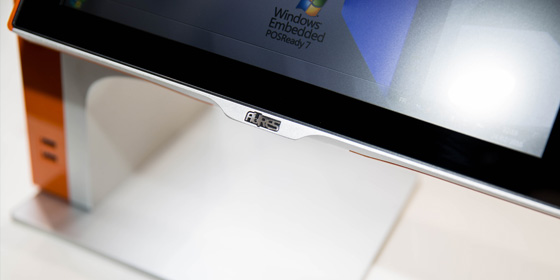In our last blog, we explored how brick-and-mortar shops and physical retail outlets are finally cracking the challenge of real-time data collection. Thanks to a variety of tracking technologies using the likes of device Wi-Fi signals, RFID tags on items and AI-enhanced CCTV, retailers are increasingly able to draw back the veil on how customers behave in store, mirroring the rich tapestry of user data that digital retail has long been able to draw upon to optimise and personalise the online experience.
In this follow up, we want to answer a simple question – what’s the value of all this hi-tech observation and data gathering to physical retail? What does it actually mean for retailers and their customers?
The short answer can be parachuted in from any discussion about data and data-led intelligence in any context. Data means clearer insights, and clearer insights mean more effective decision-making. This often takes the shape of identifying and resolving problems, seeing better ways of doing things to drive better productivity and efficiency. In customer-facing contexts, data’s benefits also coalesce around understanding customer needs and preferences better, and therefore being able to provide them with more satisfying experiences.
But how specifically does this play out in the context of physical retail? What exactly does data offer in terms of boosting both operational efficiencies and the overall customer experience? And what does it mean for the retail bottom line? Global analysts McKinsey suggest that effective use of data can trigger sales uplifts of 5% in retail, and net margin improvements of up to 4%. But how?
Giving Customers What They Want
In retail, efficiency and delivering the best possible customer experience are closely linked. The basic goal of retail is to sell as many products as quickly as possible (and yes, for the best possible price, too). The best route to achieving that? By giving customers what they want.
That’s where customer behaviour data comes into play. The more you know about your customers’ wants, needs, habits and preferences, the easier it is to put more of the stuff they want in front of them. And that kills three birds with one stone. It keeps customers happy because they’re getting what they want. It makes sales as efficient as possible and minimises waste from unsold, unwanted items. And it maximises revenues.
Brick-and-mortar retailers haven’t exactly been operating in the dark on these fronts. Sales analytics has evolved to a highly sophisticated level, capable of revealing purchase patterns and forecasting future trends to an impressive degree.
Yet the lesson from digital retail is that it’s not just understanding what customers are buying that really helps retailers drive value from data. The game-changer is understanding the journey they went on before making a purchase. Where they browse. What other items they looked at. What information they looked up. How they came to their decision. Putting all of these pieces together helps retailers not just to offer products people want. It means they can offer them the way customers want, in the places customers want.
Optimised Merchandising
In the in-store context, this means using tracking data on customer movements around a premises to identify hot and cold spots, as well as potential bottlenecks that might cause frustration due to over-crowding. Movement maps around a store can be cross-referenced with merchandising and purchase data to gather intelligence about what sells best, where.
Data can be used to investigate things like whether it is better to position reliable sellers in less prominent positions and try to push lower frequency, higher value items by putting them in the most popular spots. It can reveal the ‘linger times’ for different items, including those on promotion, when they are on display in different parts of the store. And, of course, it can show how all of this translates into sales.
This kind of store design-cum-merchandising optimisation has significant potential, especially in the AI age where data-led insights can dig deeper than ever before. But is this alone enough to trigger the kind of 5% sales uplift McKinsey mentions?
Personalisation
The other major area of potential retail data opens up is personalisation. And again, the digital experience is instructive as to what this might look like in stores. When we talk about personalisation in retail, we’re still mainly talking about targeted offers and customised recommendations based on customer behaviour. We’ve all had pop-ups offering us 25% off an item we’ve just clicked to have a look at online, or our social feeds filled with ads for products we were recently browsing.
This is where the advances in in-store tracking we highlighted in our last blog really come into their own in terms of adding value to the physical retail experience. Paired with digital screens and the growing trend for retail media networks, customer behaviour data as people browse and move around a store can increasingly be leveraged for personalised recommendations and promotions.
It could be flash discounts appearing as customers put back certain items they were looking at, or digital adverts on particular aisles changing depending on what specific products different people browse. Such data could also be fed back through POS and any devices (like mobile POS tablets) that staff use, giving them prompts about which products a customer has been looking at so they can personalize the service they provide.
Final Thoughts
Ultimately, the integration of sophisticated data-gathering technologies into physical retail is not merely about keeping pace with digital counterparts – it is about reinventing and revitalising the in-store experience itself. Data can empower retailers to finely tune every aspect of their operations, from strategic merchandising placements to real-time personalised interactions. As these insights become deeper and richer, particularly with the progress of AI, the line between digital convenience and physical shopping satisfaction begins to blur, creating a seamless, engaging journey for customers.
In this increasingly data-driven retail environment, those who leverage insights effectively will not only see the kind of profitability gains McKinsey speak about. They will enhance customer loyalty by consistently delivering experiences tailored precisely to shopper preferences and behaviours. The future of physical retail, powered by data, promises to be smarter, more responsive, and more rewarding for both retailers and consumers alike.




